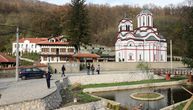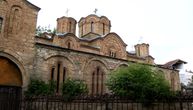If there's no water when you get there - you're sinner: The legend of secluded St. Sava church
According to tradition, there is also holy water here for which Saint Sava prayed during his ascetic days
A steep rock and a cave on the Kablar Mountain were the place where the founder of the Serbian Orthodox Church, Saint Sava (1174-1236) spent some of his ascetic days. In 1939, a church was built there to honor this saint. It can only be reached on foot, along a narrow forest path. However, the difficult approach does not prevent people of faith from visiting this shrine, especially during liturgy services that monks from the Preobrazenje Monastery serve here during summer months.
"The pedestrian path that leads to the church that is better known as Savinje, is about a kilometer long. The first part is not particularly demanding, but the last 500 meters is a path that goes across rocks, like natural steps. The holy place was built thanks to Bishop Nikolaj Velimirovic. Since the end portion of the road is completely inaccessible for any vehicle or animal, workers carried all construction material in their hands and on their backs, that is why this church is special," Goran Nikolic from the Cacak Tourism Organitation told RINA.
As legend has it, there is also holy water here, for which Saint Sava prayed during his ascetic days, and which, if the locals are to be believed, can still be seen here, because it flows from the rocks into a crack.
According to legend, if you go up to the church and there is no water, then you are a sinner.
"What we recommend is to climb to this church during the summer months, because rain and mud make it difficult to climb and can be very dangerous," said Goran.
The Ovcar-Kablar Gorge in which this church is located, is also known as the Small Holy Mountain, as it has more than 10 monasteries and one church. And there are many intentional travelers who, in addition to Orthodox shrines, visit this destination in the hope of finding the Chetnik treasure that is believed to be hidden in the rocks of the Kablar Mountain.
(Telegraf.rs/RINA)

